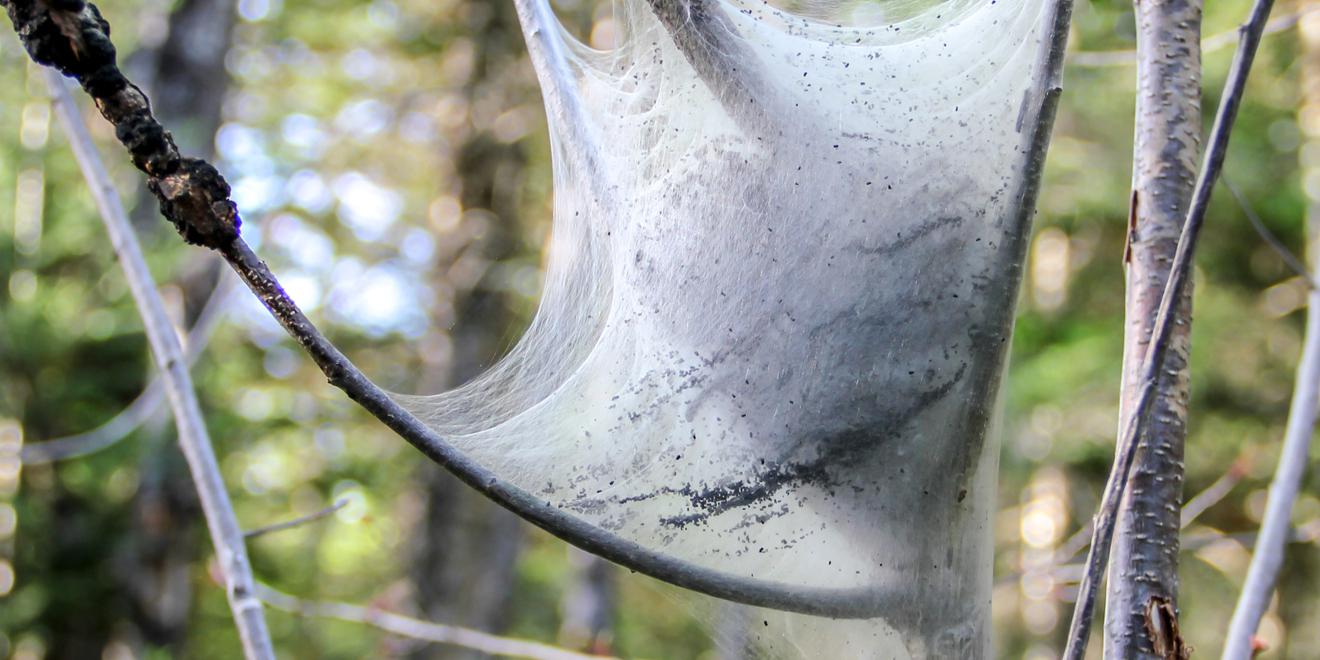Webworms vs. Tent Caterpillars and How To Help Get Rid of Them
Posted by Mosquito Squad
October 27, 2025

Author: Emma Grace Crumbley, Entomologist
From spring through early fall, it's common to see silk webs in your trees and shrubs. While some of these webs may be coming from spiders in your yard, trees covered in silk or branches weighed down by webs are a surefire sign of a tent caterpillar or webworm infestation.
Web-Building Pests
Tent caterpillars (Malacosoma species) and webworms (Hyphantria cunea) are found on deciduous trees throughout the United States. Nut trees, fruit trees, and several hardwood trees are all susceptible to tent caterpillar and webworm infestations. Both tent caterpillars and webworms represent the immature stages of moths, aka larvae.
During the larval stages, insects are particularly vulnerable to predation and environmental factors. To protect themselves as they prepare for metamorphosis, both tent caterpillars and webworms create silk webs to entangle themselves in. These webs provide protection from predators, shelter from the weather, and a place to rest, molt, and digest after the larvae have fed on leaves from their host tree.
Telling Them Apart
While tent caterpillars and webworms are very similar in their ability to infest trees, one key difference between these two pests is their seasonality. Tent caterpillars build their web tents in trees during the spring and early summer months, while webworms, like the fall webworm, spin their silky webs during late summer through the fall. Tent caterpillars tend to build their harborage sites in the nodes of tree branches along the inside of the tree, where two branches split apart, while webworms prefer building their webs on the ends of branches through the outside of the tree.
Tent caterpillar infestations can significantly weaken trees over time as the caterpillars feed on the tree leaves. In the spring, the damage caused by these pests can lead to premature defoliation, where trees begin losing their leaves too early in the year. Common trees infested by tent caterpillars include cherry, apple, and crabapple trees.
You’ll know you’re dealing with tent caterpillars if you see:
- Dark caterpillars with a white stripe down the back
- Webs appearing in the spring.
- Silky tents where branches diverge (tree forks).
- Tree unseasonally losing their leaves.
Webworms also feed on the leaves of the trees they infest, though their damage is rarely fatal to the tree. Instead, webworms cause cosmetic and aesthetic damage to the outermost parts of the trees. Common trees infested by webworms include pecan, walnut, hickory, and fruit trees.
You’ll know you’re dealing with webworms if you see:
- White, fuzzy moth larvae with light-colored webbing
- Webs appearing in late summer to early fall.
- Clustered webs at the ends of branches.
- Cosmetic damage to leaves
Control
There are several steps you can take to control webworms and tent caterpillar infestations. Physically removing infested branches by pruning them back is especially helpful for smaller, localized infestations. Knocking down webs with brooms or websters can also help stop an infestation in its tracks. For a large infestation on one tree or several webs spotted across multiple trees, it's best to call a pest control professional, like the highly trained technicians at Mosquito Squad Plus.
At Mosquito Squad Plus, our technicians are trained to identify pests, inspect for harborage areas, and work with customers to develop pest management strategies tailored to their yards and pests. To get started on your pest management plan, find a Squad near you today and call for a free quote! Services vary by location.
